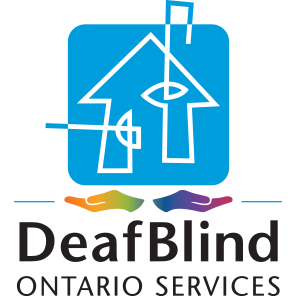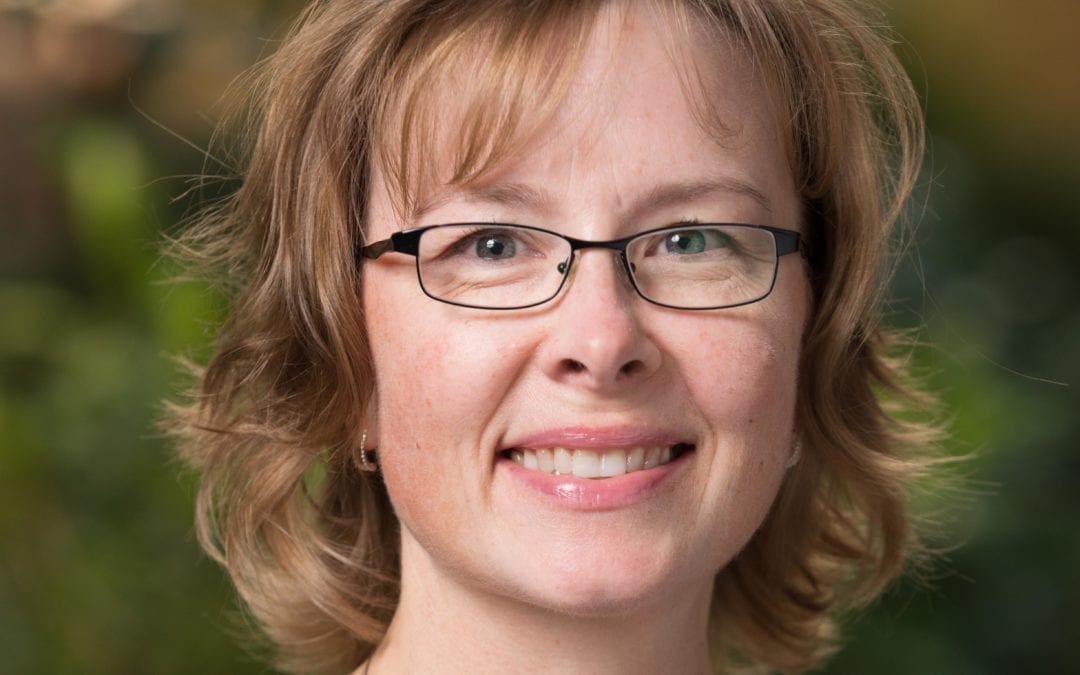Interview with Dr. Dawn Guthrie, Professor, Department of Kinesiology and Physical Education; Department of Health Sciences at Wilfrid Laurier University, Waterloo. Dr. Guthrie is a Research Affiliate with DeafBlind Ontario Services.
Dr. Dawn Guthrie received her PhD in Health Studies and Gerontology from the University of Waterloo and MSc in Epidemiology from the University of Toronto. Since 2016, she has been a member of interRAI, an international group of researchers and clinicians from 30 countries.
“I will never think of my senses the same again, and I consider this a good thing,” said Dr. Dawn Guthrie.
It was 2004; Dr. Guthrie had just started her faculty appointment when her PhD supervisor, Dr. John Hirdes at the University of Waterloo, approached her with an opportunity. The Ministry of Children, Community and Social Services (MCCSS) had funded a research project to develop a standardized assessment tool for adults who were deafblind. This work resulted in a Deafblind Supplement (DbS) to an existing interRAI tool, the Community Health Assessment (CHA).
The CHA, with the Deafblind Supplement (CHA/DbS) is a standardized set of items that evaluate the strengths, preferences, and needs of persons with dual sensory loss. The items in this supplement extend the CHA’s assessment of the dimensions of vision and hearing to address patterns of loss and change in these senses for persons with both congenital and acquired deafblindness. The CHA/DbS also includes items on communication systems, orientation and mobility, and use of interpreters and intervenors.
“Being new and keen, I was excited to take on this challenge alongside a diverse group of individuals from MCCSS, provider agencies, and a team of researchers and experts. At first, my only knowledge of deafblindness was Helen Keller,” said Dr. Guthrie.
Deafblindness is a combination of hearing and vision loss that is unique to each person. Over 1% of Canada’s population or approximately 466,420 people are deafblind. In Ontario, an estimated 211,250 individuals are deafblind.
Dr. Guthrie learned more about deafblindness through the insights and expertise of others on the team, reading lots of literature, site visits to service providers, W. Ross Macdonald School for the Blind, and the Intervenor for Deafblind Persons program at George Brown College, as well as conferences, and through connecting with people with deafblindness.
“I heard many stories and personal journeys from individuals with deafblindness. Then and now too, I am surprised, amazed, and humbled all of the time. My eyes were opened to people’s capacity to adapt without senses like vision and hearing, and just how resilient and perseverant people are.”
“Many of the people I have spoken to over the years have positive outlooks on the future and their life when they have the right supports in place. I have seen and heard about the amazing things that can happen with access to Intervenor Services, how freeing this can be for a person. I have a lot of respect for this profession,” said Dr. Guthrie.
Intervenors provide visual and auditory information to individuals with deafblindness. By facilitating the exchange of information and assisting with communication methods, intervenors empower people with deafblindness to thrive.
The CHA/DbS was created to identify the health and service needs of individuals with deafblindness. Its development took place over several years; initial pilot testing was completed with 182 individuals who were already receiving services through MCCSS.
Between 2004 and 2010, Dr. Guthrie collaborated on three projects in this research capacity, building on and refining the standardized assessment for deafblind persons in Ontario.
“If I can contribute in some way, it is very satisfying to give back and help people to understand more about others”, said Dr. Guthrie.
Today, Dr. Guthrie’s research mainly focuses on understanding the needs and abilities of older adults with disabilities, and their caregivers, including individuals receiving home care services, palliative care and adults with sensory impairments. Her research assists health care professionals, and decision-makers, when determining the needs of individuals, and their caregivers, and also to evaluate the quality of health care being provided.
“I am very fortunate to be part of the Canadian Consortium on Neurodegeneration in Aging (CCNA) Team 17, focusing on the interface between sensory function and cognitive function in dementia: implications for communication and quality of life. I work alongside a group of eight professionals in the field of vision, hearing, and cognition from universities across Canada. We recently received renewed funding until 2024.”
“Through my research, I am surprised all the time. This is what gets me out of bed in the morning; it is so exciting. This is what I am meant to do,” said Dr. Guthrie.
DeafBlind Ontario Services’ connection with Dr.Guthrie has been long-standing, as we participated in her research study, ‘Characteristics of Individuals with Congenital and Acquired Deaf-Blindness’. Recently, Dr. Guthrie helped us to develop a webinar on ‘How to Read Research Papers’ for the Community of Practice on Deafblindness (CoPD). She thoroughly reviewed our Stakeholder Engagement Report, highlighting advocacy efforts as well as the Canadian Survey on Disability data on deafblindness. Dr. Guthrie has been very kind in volunteering her time and valuable expertise.
DeafBlind Ontario Services congratulates Dr. Guthrie on her recent recognition as the ‘Best Oral Presentation’ at the 2nd World interRAI Conference in February 2020. Her presentation, ‘Older adults who develop new impairments in both hearing and vision are more likely to experience cognitive decline over time’, focussed on the aging public and dual sensory loss.
At DeafBlind Ontario Services, our commitment to providing a high quality of life for people with deafblindness is ingrained in our values. We are coordinating research into this unique disability, ensuring the evidence is used to enhance services for the people we support and develop partnerships with other community services organizations.




Recent Comments